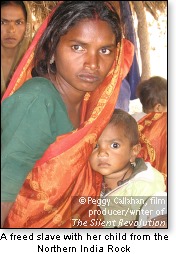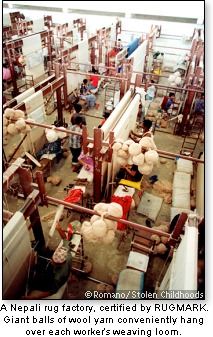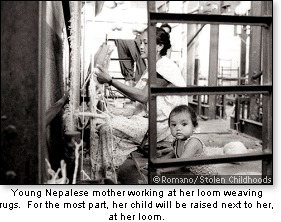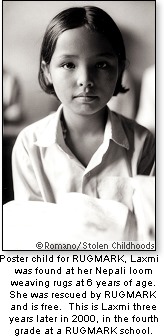Smart raids and rescues of slaves

For the most part, criminal traffickers and slave lords are not recognizable thugs, but are usually known as "respectable" businessmen within their communities. Due to the clandestine nature of human trafficking and modern-day slavery, it is most difficult to identify and bring closure to a concealed trafficking ring. In many countries, law enforcement agencies are corrupt and actually enable trafficking and slavery to operate and flourish. Because of fear for their lives and fear against corrupt police, victims are themselves unable to escape from their involuntary servitude without outside expert help. Here in the U.S., and other developed countries, law enforcement is most times of the highest order and trust, and it is in these countries where victims can be helped the most via "smart raids."
No matter how well-planned a law enforcement operation or "smart raid" is prepared, the children and adults in captivity are taught by their slave lords to fear everyone, so they naturally run from well-meaning rescuers during a raid. In many rescues, the victims face frightening choices after being freed. If they are rescued and deported back to their home country, they and their families face retribution, even death, from the local traffickers. On the other hand, if the victims are not deported after a well-planned raid and rescue, and are allowed to stay in their work country, they fear of retribution from the ringleaders there. Government officials are becoming well aware of how important treatment, rehabilitation, and education are for victims who are rescued. First, however, law enforcement agencies, originally unsympathetic to undocumented immigrants, must now win the confidence of rescued victims so they will readily cooperate and identify their criminal traffickers for speedy prosecution and imprisonment.

A well-planned raid involves using warrants or other court or police orders and is most effective when there is a high degree of information gathered by the government, non-government organizations, or ordinary citizens on a particular human slave or trafficking operation. "Smart raids" can ensure the safety of all victims and law enforcement personnel involved.
Certain raids are conducted in a "blind" way. These are the most dangerous kind and are not always successful in rescuing victims from their workhouses. However, in some areas, especially in underdeveloped countries, these "blind raids" are the only kind that can be conducted, due to the corruption of law enforcement in the area. Non-government organizations often help law enforcement officers carry out raids and rescues.
Take for example one exemplary global nonprofit organization, an NGO called RUGMARK International [www.Rugmark.org], which is working to end illegal child labor in the carpet industry in India, Nepal, and Pakistan. RUGMARK does this through loom and factory monitoring by corps of independent inspectors, and by consumer labeling of the "RUGMARK" label, assuring that any carpet sold with this label is free of illegal child labor. RUGMARK also fights child slavery by building and operating schools for former child slaves, as well as children of freed adults. RUGMARK carpets are widely sold in Europe and North America. Of its year 2004 total retail sales of RUGMARK rugs, $57,000 was directed to educate children in South Asia.
RUGMARK has a licensing program where rug companies can sign up with RUGMARK to get the certification on their rug, agreeing to random surprise inspections in all of their production sites. During those inspections, which occur regularly but unexpectedly, slave children are sometimes identified and rescued. There are other non-government organizations that do similar work, but in more of a "raid" scenario where the employer is not compliant and not willing to provide open access. In that case, these organizations have to conduct secret raids to rescue the slaves.

In an interview with this journalist, Nina Smith, Executive Director of RUGMARK Foundation USA, describes the problem of selling handmade wool rugs that are made with child labor:
"One of the things in this country [USA] that is driving the problem of child slavery in Southeast Asia is the increasing demand for cheap goods and the consumer attitude for a disposable lifestyle – the economics of the situation. There are people working on the policy level, the enforcement level, and on the grassroots level in the field doing rescue operations. There is a whole range of groups working on the slavery problem. RUGMARK'S specific niche is to create a demand in the U.S. and Europe for child-labor-free goods. Then very simply, manufacturers are not going to produce them. In the case of children slaves, if there are not schools available to them, then the only alternative is for children to go to work."
A condensed version was published in the February and April 2006 Issue of Catholic World Report.
Article copyrights are held solely by author.
[ Japan-Lifeissues.net ] [ OMI Japan/Korea ]


